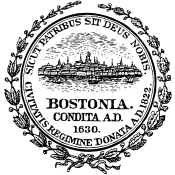Museum of Science (Boston)
 Main entrance | |||||||||||||||||
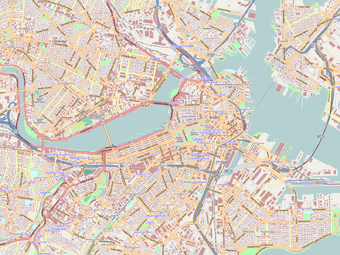 Location within Boston | |||||||||||||||||
| Established | 1830 | ||||||||||||||||
|---|---|---|---|---|---|---|---|---|---|---|---|---|---|---|---|---|---|
| Location | Boston, Massachusetts | ||||||||||||||||
| Coordinates |
42°22′04″N 71°04′16″W / 42.367778°N 71.070997°WCoordinates: 42°22′04″N 71°04′16″W / 42.367778°N 71.070997°W | ||||||||||||||||
| |||||||||||||||||
The Museum of Science (MoS) is a science museum and indoor zoo in Boston, Massachusetts, located in Science Park, a plot of land spanning the Charles River. Along with over 700 interactive exhibits, the museum features a number of live presentations throughout the building every day, along with shows at the Charles Hayden Planetarium and the Mugar Omni Theater, the only domed IMAX screen in New England. The museum is also an accredited member of the Association of Zoos and Aquariums (AZA) and is home to over 100 animals, many of which have been rescued and rehabilitated from various dangerous situations.
History
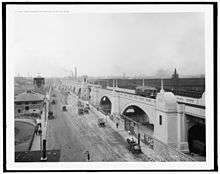

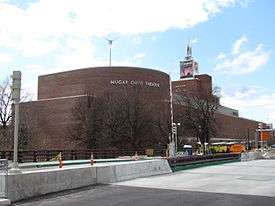
Origin and early years
The museum began as the Boston Society of Natural History in 1830, founded by a collection of men who wished to share scientific interests. It was more commonly called the Boston Museum of Natural History in the 19th century, and this name occurs frequently in the literature. In 1862, after the society had gone through several temporary facilities, a building was constructed in the Back Bay area of the city and dubbed the "New England Museum of Natural History." The museum was located next to the original Rogers Building of the Massachusetts Institute of Technology (MIT), and both neoclassical structures were designed by William G. Preston. The original MIT building was demolished in 1939, but the Natural History Museum building survives today, as a home furnishings showcase.
A great deal of scientific work was done by the society, especially around geology, and the results of this work can be found in the Proceedings of the Boston Society of Natural History which are now freely available online. A library and children's rooms were added to the museum around 1900. It was renamed the Museum of Science in 1939, under a dynamic new Director.[2]
The Boston Museum of Natural History of 1830/1864–1945 should not be confused with the private Warren Museum of Natural History (1858–1906, formerly on Chestnut Street in Boston). The contents of the latter collection, including the first intact mastodon, were relocated to the American Museum of Natural History of New York City in 1906.
Museum Then and Now, an exhibit of artifacts from the early years of the society, is located near the second floor Blue Wing entrance to the Theater of Electricity in today's museum.
Post WWII
After World War II, the old Museum of Science building was sold, and the museum was relocated, again under the name Boston Museum of Science. Under the leadership of Bradford Washburn, the society negotiated with the Metropolitan District Commission for a 99-year lease of the land on the Charles River Dam Bridge, now known as Science Park. The museum pays $1 a year to the state for use of the land. Construction and development began in 1948, and the museum opened in 1951, arguably the first all-encompassing science museum in the country.
In these first few years, the museum developed a traveling planetarium, a version of which is still brought to many elementary schools in the Greater Boston area every year. They also obtained during these early years "Spooky", a great horned owl who became a symbol or mascot of the museum; he lived to age 38, the longest any great horned owl is known to have lived. Today, a number of other taxidermed specimens remain on display, teaching children about the animals of New England and of the world.
The Science Park/West End MBTA station was opened in August 1955, allowing easier access to the museum by public transportation. The Charles Hayden Planetarium was opened in 1958.
Many more expansions continued into the 1970s and 1980s. In 1999, The Computer Museum in Boston closed and became part of the Museum of Science, integrating some of its displays, although the most of the historical artifacts were moved to the Computer History Museum in Mountain View, California.[3]
A major renovation and expansion took place during 2005 and 2006. In 2010, the Charles Hayden Planetarium was closed for renovation, and has since reopened.[4]
The main entrance to the museum straddles the border between the cities of Boston and Cambridge, and the boundary is indicated by a marker embedded in the floor inside the museum. In 2013, the Museum of Science was the venue for the first joint session of the Boston and Cambridge city councils, to discuss policy measures to improve retention of talented recent university graduates in the area.[5]
Future
Starting in 2013, the Museum of Science has been undergoing a major renovation to upgrade the physical structure and develop new educational content. This $250 million campaign will upgrade nearly half of the Exhibit Halls from 2012, and open three new major exhibits: the Hall of Human Life, the Yawkey Gallery on the Charles River, and What Is Technology?[6] The Hall of Human Life opened in November 2013 in the newly expanded Level 2 of the Green Wing, and has a focus on human biology.[7] The audio kinetic sculpture "Archimedean Excogitation" has been moved to the atrium to make way for a new exhibit in the lower lobby called The Yawkey Gallery on the Charles River. This exhibit opened in 2016, creating a new entry to the museum with better views of the Charles River and Boston-Cambridge skyline.[8]
On October 18, 2016 former mayor of New York City Michael Bloomberg revealed that his foundation, Bloomberg Philanthropies, is donating $50 million to the museum, the largest gift in the institution’s 186-year history.[9]
The museum also opened a new exhibit named Wicked Smart: Invented in the Hub which has information about new technologies, especially those created in or around the Boston area. This new exhibit also contains a few interactive activities including a wheel chair visitors can sit in and an Xbox Kinect and projector.
Exhibit halls
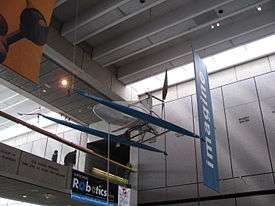
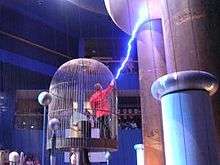
- Butterfly Garden: a walk-through greenhouse containing exotic butterflies with an area dedicated to botanical education
- Seeing is Deceiving: a collection of optical illusions, including many motorized illusions
- Making Models: exhibit on the use of physical and abstract models to understand the real world
- Mathematica: A World of Numbers... and Beyond: a roomful of classic mathematical exhibits by designers Charles and Ray Eames
- Natural Mysteries: an investigative exhibit on classification of mysterious objects and natural history specimens
- Theater of Electricity: features the world's largest air-insulated Van de Graaff generator, designed by Professor Robert J. Van de Graaff and donated by MIT in 1956. Demonstrations of "artificial lightning bolts", Tesla coils, and other electrical apparatus
- Clark Collection of Mechanical Movements: over 100 working models of mechanical motions and linkages[12]
- Innovative Engineers: exhibits and brief biographies of Boston engineers, including minorities and women
- Investigate!: a house-sized collection of rooms to explore using scientific thinking
- Energize!: exhibits of renewable energy technologies
- Nanotech
- Mapping
- Take a Closer Look
- Modeling the Mesozoic
- Machines & Transportation
- Living on the Edge
- T. Rex
- To the Moon
- Behind the Scenes
- Wicked Smart: Invented in the Hub
Green Wing
- New England Habitats
- A Bird's World
- Colby Room: a classic explorer's trophy room filled with stuffed animal heads from big-game hunting, preserved as a historical exhibit and also used for meetings
- Hall of Human Life: an exhibit of interactive activities focusing on human biology
- Mirror Maze (coming soon): an introduction to the math and science behind reflections
Red Wing
- Mugar Omni Theater: largest Omnimax movie theater in New England
- Charles Hayden Planetarium
- Cosmic Light
- Discovery Center: offers the opportunity to talk with scientists and participate in experiments
- Foucault pendulum: shows the effect of the rotation of the earth
- Museum Store
- Polage: a wall-sized polarized light collage of shapes by artist Austine Wood Comarow
- Soundstair: a stairway fitted by artist Christopher Janney with photoelectric cells which trigger musical sounds
- Archimedean Excogitation: a large rolling ball sculpture by George Rhoads
- Simulator ride
Miscellaneous
- Yawkey Gallery on the Charles River: an open area filled with information about the Charles River and river science in general
- Rocks form Around the World
Live presentations and programs
The museum offers many free live presentations to the visitors.[13]
Tech Studio
Tech Studio is an exhibit on the first level in the Blue Wing that sees about 200–800 visitors a day.[14] It includes various different design challenges and other more one-on-one "cart activities" for visitors. The design center includes about a dozen activities for visitors to attempt while learning about the engineering process run twice a day from 10am-12pm and from 1:30pm–3:30pm during the school year, and also 4:30pm–6:30pm during the summer.[14] The cart activities include robotics and circuitry and are more meant for teaching visitors about new technology. All activities also include a magnet for visitors who attempted the activities.
Notable past exhibits
- In the 1950s, a small Wilson cloud chamber was featured in the main entrance hall. Visitors could come within inches of radioactive material to watch the vapor trails of the particles they emitted.
- The first Fresnel lens used in a lighthouse in the US (Navesink lighthouse), was on display from the early 1950s until 1979.
- In 1988, the museum was host to an exhibit focusing on the life and times of Ramses II. The exhibit displayed more than 70 artifacts, on loan from the Egyptian Museum in Cairo. Arguably, the centerpiece of the exhibit was a 40-foot-tall model of an Egyptian temple which housed a 3,000-year-old, 57-ton granite statue of Ramses. The exhibit ran from May 7, 1988 through August 30, 1988.[15][16]
- From August to October 2004, the museum was host to the US premiere of The Lord of the Rings the Motion Picture Trilogy the Exhibition, developed by the Te Papa museum in New Zealand, and containing many of the costumes and props from the films.
- Gunther von Hagens' Body Worlds 2: The Anatomical Exhibition of Real Human Bodies was at the Museum of Science from July 29, 2006 to January 7, 2007.
- From October 25, 2009 to February 21, 2010, Harry Potter: The Exhibition was at the museum.[17]
- The Museum of Science built and designed its own film-based exhibit, entitled Star Wars: Where Science Meets Imagination. It was on display there from October 2005 to April 2006, and traveled to other venues.
- The Science Behind Pixar is a 13,000 square foot exhibition currently on tour around the US. It was created by the Museum of Science, Boston, in collaboration with Pixar Animation Studios. This exhibit featured some of the activities, videos, and images that describe the math, computer science, and science that go into making computer animated films.

Computing exhibits

Although the history artifacts of The Computer Museum (TCM) were moved from Boston to Silicon Valley to become the core of the current Computer History Museum, some former TCM educational exhibits and objects were transferred to the Boston Museum of Science where two new computing and technology exhibits were created. The Computing Revolution, an exhibit no longer on display at the Museum of Science, related the history of computing through a variety of hands-on interactive exhibits. Cahners ComputerPlace, previously located in the Blue Wing, Level 1, housed displays ranging from educational video games to an interactive AIBO ERS-7 robot.
Other attractions
- The museum has developed a to-scale community solar system model that spans as far as the Riverside MBTA station (in Newton, Massachusetts). The models of the Sun, Mercury and Venus are located on the museum grounds.
- Construction began on a rooftop Wind Turbine Lab in 2009.[18] The lab tests nine wind turbines from five different manufacturers on the roof of the museum. An exhibit in the Blue Wing, Catching the Wind, includes a live data stream on how much electricity each turbine is producing.
- Overnights: Students in grades 1–7, as well as Scout groups, spend a night at the museum.
See also
- Boston Society of Natural History, predecessor to the museum
- Intel Computer Clubhouse Network, global after-school technology program headquartered at the museum
References
- ↑ "TEA-AECOM 2016 Theme Index and Museum Index: The Global Attractions Attendance Report" (PDF). Themed Entertainment Association. pp. 68–73. Retrieved 23 March 2018.
- ↑ "Museum of Science history". Mos.org. Retrieved 2013-06-04.
- ↑ "Computer History Museum | Backgrounder". Computerhistory.org. Retrieved 2013-06-04.
- ↑ "Planetarium History". Mos.org. Retrieved 2013-08-19.
- ↑ Boston Fab (April 2, 2013). "Boston and Cambridge City Councils Unite Around Retention Issues". Retrieved July 5, 2013.
The same day that Mayor Menino shared the end of his 20 year reign, Boston and Cambridge city councils led by Tito Jackson (Boston) and Leland Cheung (Cambridge) met on neutral ground – the Museum of Science – to talk retention of talent in both cities.
- ↑ Ross, Casey (January 29, 2013). "Museum of Science gallery to overlook Charles". Boston Globe. Retrieved 4 June 2013.
- ↑ "Hall of Human Life". Museum of Science. Museum of Science, Boston. Retrieved 4 June 2013.
- ↑ "Museum of Science opens new, transformative exhibit, the Yawkey Gallery on the Charles River | Museum of Science, Boston". www.mos.org. Retrieved 2017-07-15.
- ↑ Shirley Leung (October 18, 2016). "With $50m, Bloomberg thanks Museum of Science". The Boston Globe. Retrieved October 18, 2016. (Registration required (help)).
- ↑ "Museum Map" (PDF). Mos.org. Retrieved 2013-08-19.
- ↑ "Field Trip Activities". Museum of Science. Museum of Science, Boston. Retrieved 22 May 2013.
- ↑ "Clark Collection of Mechanical Movements". KMODDL. Cornell University. Retrieved 21 May 2013.
- ↑ "Live presentations". Mos.org. Retrieved 2013-08-19.
- 1 2 "Design Challenges". MOS Website. Retrieved 18 January 2018.
- ↑ "Ramses II Visits a Boston Museum". Nytimes.com. Retrieved 2014-02-18.
- ↑ "Ramses the Great Will Shift His Weight". deseretnews.com. Retrieved 2014-02-18.
- ↑ "Fuel for Wizards". Zagat.com. Retrieved 2013-08-19.
- ↑ "New US Rooftop Wind Turbine Lab". Renewable Energy World. 2009-06-01. Retrieved 2009-07-07.
External links
| Wikimedia Commons has media related to Museum of Science, Boston. |
- Official website
- The museum's current Science & Technology Center
- Current Exhibits & Reviews
- A science podcast from the Current Science & Technology Center
- Navesink lighthouse information from the National Park Service
- "Human Connections" Video on the making of this large interactive polarized light mural, located in the atrium of the Mugar Imax Wing of the MOS (Artist: Austine Wood Comarow)
- MOS is a member of NISE Net, and participates in NanoDays
